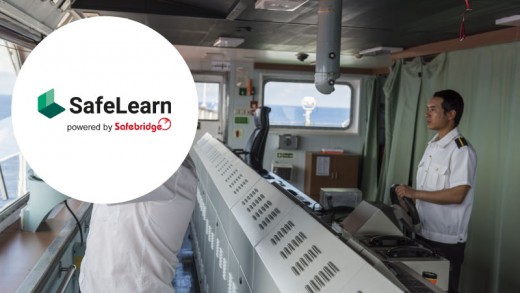Safebridge Shop Beta Release Disclaimer
XBy using the beta version of the Safebridge online shop platform (for the purposes of this disclaimer hereinafter referred to as the “Platform”) you accept that:
- You are bound by the Safebridge Terms and Conditions, the Terms of Use, Data Protection Declaration, and Privacy Policy listed provided at www.safebridge.net/legal
- The Platform may have bugs which may affect the user experience. If you experience any issues please report them to us by completing the contact form located here.
Please note that the Safebridge shop will be upgraded and replaced by Trainingportal. To purchase your online training courses, visit www.trainingportal.com
Radar Basics: Navigation and Watchkeeping
Navigation and watchkeeping using Radar provides a well-rounded picture of how a navigator can optimally integrate radar during their bridge watch. The training course has been based on the book “Radar Basics” written by Volker Wenzel and Marcus Wöster.
Navigation
 Course Description
Course Description
Radar is an elementary mean of positioning. It provides an easy and precise capability to fix a position and determine how the vessel moves in relation to other targets. The accurate setting of the radar is imperative for correct usage and needs to be considered when taking over the watch.
Needless to say, radar is only one step when taking over the watch. Therefore, it needs to be seen in the context of the other bridge equipment and traditional watchkeeping procedures.
 Course Objectives
Course Objectives
The aim of the course is to enable navigators to efficiently integrate radar into their bridge watch. It provides guidance at all crucial steps, from taking over the bridge and setting up the radar to watchkeeping, navigation and even SAR use.
 Target Audience
Target Audience
Officers who are looking for an easy-to-follow supplement or refresher to their radar and ARPA courses and anyone requiring knowledge of the general features of radar.
 Course Structure
Course Structure
Module 1: Setting up the Radar
Module 2: Radar Navigation
Module 3: Watchkeeping
Module 4: Search and rescue with Radar and AIS
 Learning Outcomes
Learning Outcomes
Module 1: Familiarizes the learner with the essential settings and tools of radar, from tune and gain to orientation modes and vectors. It provides background information to ensure their advantages and limitations are understood.
Module 2: Builds on classical navigational techniques, such as positioning by range or bearing, in combination with the specific radar tools that can be used to facilitate those techniques.
Module 3: Puts radar in the context of a navigational watch, enhancing the learner’s capability to adjust it to the specific requirements of the situation.
Module 4: Provides an overview of radar and AIS based SAR devices, to ensure their detection during navigation.
 Prerequisites
Prerequisites
Required: Basic nautical knowledge.
Note: It is not necessary for you to have a CoC as a navigational watch officer; however, an understanding of terrestrial and electronic navigation is recommended.
 Course Characteristics
Course Characteristics
Course Access: 90 days
Timeframe: Approx. 1 hour
Language: English
Certificate: Yes (valid indefinite)
Strong Authentication: No
Daily test attempts: 2
Min % of progress on GuideMe to access TestMe: 70%
Min % of passing the TestMe: 70%
Total test time: 60 min
 Technical Requirements
Technical Requirements
We recommend the use of a wired internet connection when taking this course. Connection via mobile internet is also possible; however, it is considered unstable and might cause the failure of your exam.
Supported Internet Browsers:
Operating Systems:
- Microsoft Windows
- Apple macOS
- Linux,
- Android
- Apple's iOS
Video not available
In order to add the product to the wishlist you must first create one here





